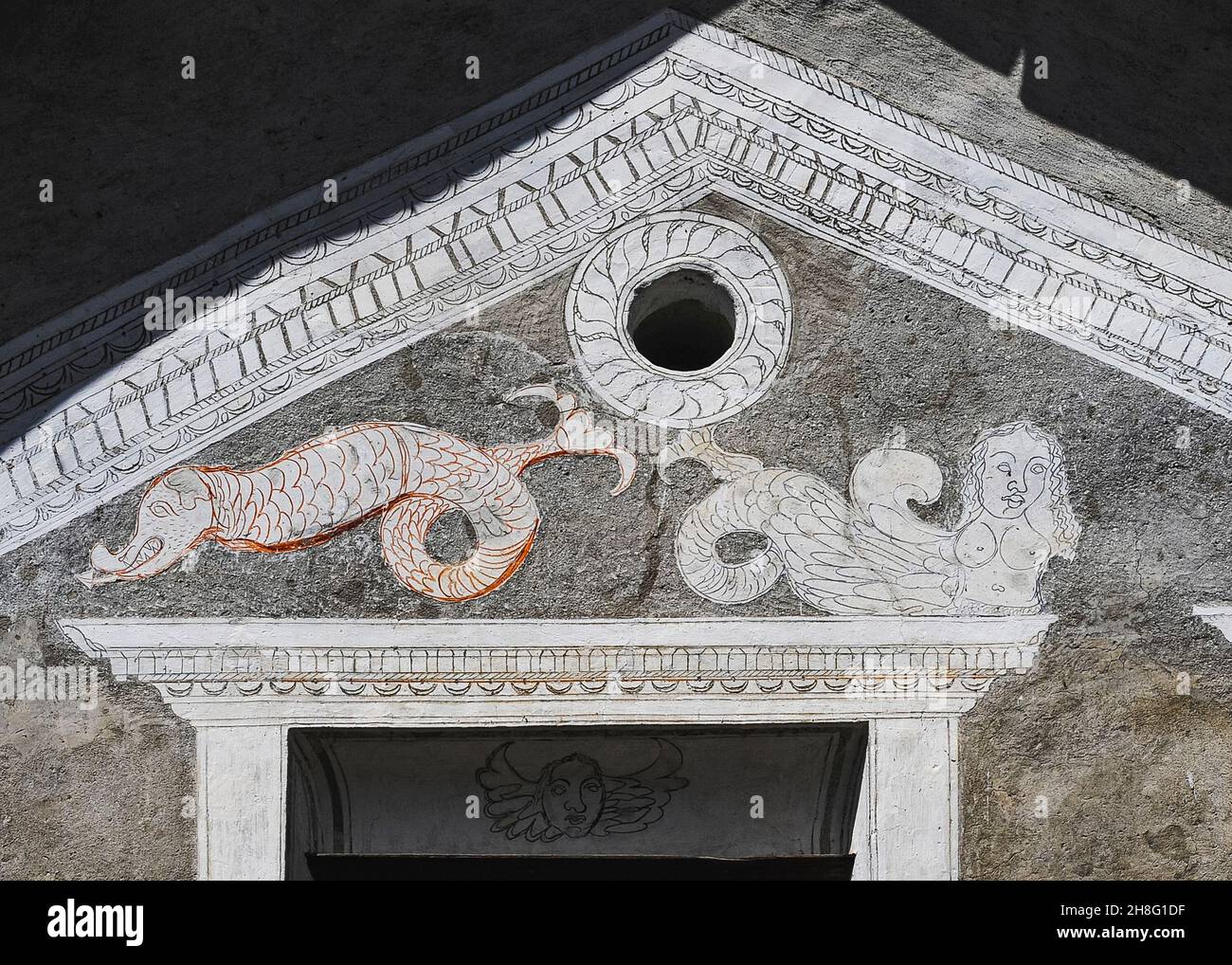A buxom mermaid reclines beside a scaly sea monster with a forked tail and an arrowhead tongue in eye-catching rustic sgraffito art on the front of a restored traditional family house in Ardez, Graubünden or Grisons canton, eastern Switzerland. Dragons, mermaids and sea creatures are found on many dwellings in the area restored by local sgraffito artists in the early 1900s.

Image details
Contributor:
Terence Kerr / Alamy Stock PhotoImage ID:
2H8G1DFFile size:
18.2 MB (1.5 MB Compressed download)Releases:
Model - no | Property - noDo I need a release?Dimensions:
2984 x 2132 px | 25.3 x 18.1 cm | 9.9 x 7.1 inches | 300dpiDate taken:
21 July 2007Location:
Ardez, Graubünden or Grisons canton, eastern SwitzerlandMore information:
This image could have imperfections as it’s either historical or reportage.
Ardez, Graubünden or Grisons canton, eastern Switzerland: a scaly sea monster with an arrowhead tongue and a forked tail shares the top of a window surround with a buxom mermaid, on the restored facade of Haus Aual 131, one of the ancient dwellings in the village decorated with imaginative sgraffito designs. Elsewhere on the facade, a carefree mermaid grasps her twin tails in both hands while girlish supporters blow horns or pipes, one of them standing beside an inscription in Romansh, a legacy language of the ancient Roman Empire still spoken by many local people. Ardez, in the Lower Engadine Valley, is an historic village renowned for its carefully restored 16th and 17th century houses decorated with heraldic symbols, Romansh inscriptions and wall art. While some designs are painted, others are sgraffito, the ancient artistic technique of scratching or cutting away parts of a surface layer of plaster, stucco or paint to expose a different colour or texture. Its heyday in Graubünden was in the 1600s and 1700s, but the craft was revived in the early 1900s amid fresh appreciation of regional artistic styles. In the Lower Engadine, Iachen Ulrich Könz restored many sgraffito facades in his home village, Guarda. His sons switched away from traditional designs, enriching more than 100 historic facades, including some in Ardez, with dragons, fish or mermaids. They also added decorative sgraffito to modern buildings and today, Graubünden artists and craftsmen use sgraffito both in restoration work and in new build projects. D1186.B4162.A